Bonhams Make World Record Prices for Glass and Porcelain Chinese Snuff Bottles
A 'famille-rose' enamelled gold-ground glass 'lotus' snuff bottle, which sold for HK$9,056,000. Photo: Bonhams
HONG KONG.- Bonhams Hong Kong today (23 November 2010) celebrated its second “Golden Gavel Auction”, when Part II of the world’s finest collection of important Chinese snuff bottles, the Mary and George Bloch Collection, sold 100% and achieved world record prices. Against presale estimates of HK$24,000,000, the sale total was HK$54,832,000 (£4, 437,930) with every one of the 155 rare bottles successfully sold. A good number of the lots sold for twice to four times its estimate.
A new world record for a porcelain snuff bottle was reached when Lot 121 sold for a staggering HK$8,384,000 (£678,815), four times its pre-sale estimate of HK$2,000,000. Commissioned by the Qianlong emperor and enamelled in the palace workshops of the Imperial Palace between 1736 and 1760, this extraordinary snuff bottle, decorated with ‘double-gourds’, symbolic of long life, is identical to another rare example still preserved in the Forbidden City Palace Museum.
A 'famille-rose' porcelain moulded and enamelled 'double-gourd' snuff bottle. Imperial kilns, Jingdezhen, Qianlong seal mark and of the period, 1736–1760
5.12cm high. Sold for HK$8,384,000
Treasury 6, no. 1151
瓷胎畫琺瑯葫蘆形鼻煙壺
景德鎮官窯,黑書「乾隆年製」篆款,1736-1760
Imperial Sons
Famille rose enamels on colourless glaze on porcelain; with a flat lip and slightly concave foot; moulded in the form of a double gourd with two loop handles, the surface with a moulded and painted design of a fruiting, leafy, gourd-vine on a pale orange-beige ground with a dense formalized scrolling floral design in gold; the lip and interior of the neck also gold; the interior covered with colourless glaze; the foot painted in black seal script Qianlong nian zhi ('Made during the Qianlong period')
Imperial kilns, Jingdezhen, 1736–1760
Height: 5.12 cm
Mouth/lip: 0.61/1.08 cm
Stopper: gilt bronze chased with a formalized floral design
Condition: very minor natural pitting of some enamels used as part of the design on the gourds, where the pits have been edged in some places with dabs of red enamel to look like variations in the rind of the fruit; not at all obtrusive, even where not used; otherwise, in extraordinary, kiln condition and apparently barely, if ever, used.
Provenance: J & J Collection
Eric Young
Sotheby's, London, 3 March 1987, lot 64, (front cover illustration)
Published: Arts of Asia, July–August 1987, p. 118
JICSBS, Summer 1987, p. 22
Art at Auction, 1986–1987, p. 380
Kleiner 1987, no. 220
Kleine Schätze aus China, p. 9
Kleiner, Yang, and Shangraw 1994, no. 139
Kleiner 1995, no. 191
Moss 2009, p. 12, fig. 15
Treasury 6, no. 1151
Exhibited: Sydney L. Moss Ltd, London, October 1987
Creditanstalt, Vienna, May–June 1993
Hong Kong Museum of Art, March–June 1994
National Museum of Singapore, November 1994–February 1995
British Museum, London, June–October 1995
Israel Museum, Jerusalem, July–November 1997
Commentary: This is one of a well-known group of almost identical bottles, presumably made as one or more sets in series. Others are in the J & J Collection, Moss, Graham, and Tsang 1993, no. 231 (the duplication prompted the disposal of the present bottle some years ago); Lady David 1973, no. 836; JICSBS, Summer 1988, inside cover; Geng and Zhao, no. 122 (also appearing in China Guardian, Beijing, 1 June 1967, lot 1173, and again in Hanhai, Beijing, 5 July 1999, lot 1603); Li Jiufang 2002, no. 311 (which is also in Zhu and Xia 1988, plate 51; from the imperial collection), and Christie's, New York, 2 December 1993, lot 466 (also in Lam 2003, p. 13, fig. 15; from the Denis Low Collection).
This bottle is moulded in two parts that are joined vertically, the joint visible on the inside but not on the outside. It shares with the Tang Ying bottles the thinness and delicacy of the porcelain body; it has a similar seal mark in black enamel and a very similar tiny floral scroll in gold on a coloured ground. The quality is also exceptional, both in the painting of the design and the firing of the enamels. We are probably safe in assuming that it was made during the earlier part of the reign, perhaps as early as the 1740s. It is not at all out of place among the high-quality wares made under the supervision of Tang Ying, and now that we have proof of high-quality early-Qianlong porcelain snuff-bottle production at Jingdezhen, there is no reason to believe that this was not part of it.
All of the early-Qianlong bottles made at Jingdezhen under the supervision of Tang Ying or benefiting from the high level of artistic and technical quality he brought to the kilns are masterly; this is no exception. Apart from the thinness of the body and the delicate formal balance between the upper and lower bulbs of the form, the composition is extremely well thought out. The painting is exquisite, just as it was on the J & J bottle, where we noted the elegance of the brushwork, particularly in the painting of the leaves with their well-controlled, beautifully modulated black lines on green enamel.
It may be fruitful to link this small series of early-Qianlong masterpieces to a certain order from the emperor in 1758 (twelfth month) for 'nine gourd-shaped snuff bottles' to be made at Jingdezhen based upon one of three samples sent down from the court. The samples in the imperial order are described as yangci ('foreign porcelain'); despite the ambiguity as to the precise meaning of this term in the mid-eighteenth century, it seems likely that the three samples sent down to Jingdezhen were porcelain rather than enamelled metal. From this order, we can therefore posit the existence of two series of such bottles, the later series known to have been limited to nine pieces; if the two series constituted the total production, half a dozen is a plausible number to have survived. Linking the surviving bottles to the 1758 order also explains why the relief gourds appear to be in different positions on some bottles: each series was made with its own mould, resulting in minor changes to the positioning of the relief elements.
乾隆葫蘆畫琺瑯
瓷胎無色釉上的畫琺瑯;平唇,微凹底,模印細腰葫蘆,二環保耳;器身滿畫與模印纏枝藤蔓與葫蘆,在灰菊黃赽畫金彩連續勾卷紋;唇內頸內也是金,腹內壁施無色釉;底黑書 "乾隆年製"篆款
景德鎮官窯, 1736~1760 年
高:5.12 厘米
口經/唇經:0.61/1.08 厘米
蓋:鎏金青銅,鏤刻形式化的花朵
狀態敘述: 畫葫蘆的琺瑯某些地方呈自然而然的點狀缺陷,缺陷處有所塗紅琺瑯以模擬葫蘆皮顏色的變化,並不引人注目。此外,例外的出窯狀態,好像幾乎沒有人使用過
來源: J&J珍藏
Eric Young
蘇富比,倫敦,1987年3 月3日, 拍賣品號64, (封面)
文獻: Arts of Asia, 1987年7月~8月, 頁 118
《國際中國鼻煙壺協會的學術期刊》(JICSBS),1987年夏期,頁 22
Art at Auction, 1986~1987, 頁 380
Kleiner 1987, 編號220
Kleine Schätze aus China, 頁 9
Kleiner, Yang, and Shangraw 1994, 編號139
Kleiner 1995, 編號191
Moss 2009, 頁 12, 圖 15
Treasury 6, 編號1151
展覽: Sydney L. Moss Ltd, 倫敦, 1987年10月
Creditanstalt, 維也納, 1993年5月~6月
香港藝術館,1994年3 月~6月
National Museum of Singapore, 1994年11月~1995年2月
大英博物館, 倫敦, 1995年6月~10月
Israel Museum, 耶路撒冷, 1997年7月~11月
說明: 其他例子和詳細論述,請參閱本壺的英文說明。
The highest price of the sale, and a new world record for a glass snuff bottle was achieved by Lot 152, a 'famille-rose' enamelled gold-ground glass 'lotus' snuff bottle, which sold for HK$9,056,000 (£732,921), almost four times its presale estimate of HK$2,500,000. This exquisite snuff bottle was commissioned by the Qianlong emperor (1736-95), and decorated with lotus flowers against a rich golden ground, and incised on the base with the Imperial mark.
A 'famille-rose' enamelled gold-ground glass 'lotus' snuff bottle. Imperial, palace workshops, Qianlong incised mark and of the period, 1736–1765
5.21cm high. Sold for HK$9,056,000
Treasury 6, no. 1072
玻璃胎畫琺瑯開光蓮花鼻煙壺
御製品,宮廷作坊,陰刻「乾隆年製」篆款,1736-1765
Golden Lotus
Famille rose enamels on translucent white glass; with a flat lip and recessed slightly convex foot surrounded by a protruding convex footrim; painted on each main side with a foliate panel of lotus and aquatic grass, the panels surrounded by a formalized floral design, the shoulders with a band of formalized lingzhi beneath a neck band of formalized flowers, all on a gold ground; the foot inscribed in engraved seal script Qianlong nian zhi ('Made during the Qianlong period')
Imperial, palace workshops, Beijing, 1736–1765
Height: 5.21 cm
Mouth/lip: 0.80/1.32 cm
Stopper: pearl; jadeite finial; coral collar
Condition: some original pitting to enamels, particularly the ruby red; tiniest of insignificant chips to inner lip (or possibly part of the process of manufacture); very slight wear to the gold enamel, with one tiny flake from the gold enamel beneath the large lotus leaf on the right; otherwise, in kiln condition
Provenance: Liu Wen-choo (acquired prior to 1911)
J. T. Tai & Co., New York, (circa 1969)
Hugh M. Moss Ltd (circa 1971)
Loch Awe Collection (1985)
Hugh Moss (HK) Ltd (1985)
Published: Bahr & Wilkinson 1911, p. 143, plate CII
Hugh M. Moss Ltd 1970, p. 66, no. 266
JICSBS, December 1975, p. 9, fig. 28
Moss 1976, plate 40 (text, pp. 62 and 63)
JICSBS, Winter 1986, front cover
Kleiner 1987, no. 15
Kleiner, Yang, and Shangraw 1994, no. 15
Kleiner 1995, no. 28
Treasury 6, no. 1072
Exhibited: Sydney L. Moss Ltd, London, October 1987
Creditanstalt, Vienna, May–June 1993
Hong Kong Museum of Art, March–June 1994
National Museum of Singapore, November 1994–February 1995
British Museum, London, June–October 1995
Israel Museum, Jerusalem, July–November 1997
Commentary: The painting on the present bottle is not only purely Chinese in conception and style, it is magnificently well painted, with all the subtlety of the finest enamels from the early-Qianlong palace workshops. In an unusual reversal of the usual technical shortcomings on early enamels on glass, the green here has fired exceptionally well, while the ruby-pink, where it is thicker, bubbled in the firing and is pitted where the bubbles burst. The excellent state of the gold ground on so many bottles of this group suggests they have barely been used. Enamelled glass was not distributed with the same largesse as more easily produced wares, so far more remained in the imperial collection until after 1860 and were less exposed to wear.
The stopper for this bottle was made by Moss with a pearl provided by Bloch. Among the many bottles in the National Palace Museum, Taipei, the vast majority have what appears to be an enamelled metal stopper imitating a lapis cabochon with a pearl finial and a gilt metal collar, while others have the standard gilt-bronze stopper for palace enamels, with a formalized floral design.
金蓮畔
透光白色玻璃胎畫琺瑯;平唇,微凸斂足,突出凸形圈足;前後二開光畫金地蓮與草, 開光外畫金地卷枝花紋等,底刻陰文 "乾隆年製" 篆款
御製品,宮廷作坊, 北京, 1736~1765年
高:5.21 厘米
口經/唇經:0.80/1.32 厘米
蓋:珍珠; 翡翠頂飾; 珊瑚 座
狀態敘述:琺瑯呈原有的點狀缺陷,特別是紅寶石紅琺瑯;唇內緣呈微乎其微的缺口,或許是製作過程的結果;金色琺瑯有微乎其微的磨損,右邊的一大荷葉下落掉了一微小片。此外,出窯狀態
來源: Liu Wen-choo (1911年前得到的)
J. T. Tai & Co., 紐約, (約1969)
Hugh M. Moss Ltd (約 1971)
Loch Awe 珍藏 (1985)
Hugh Moss (香港) Ltd (1985)
文獻: Bahr & Wilkinson 1911, 頁 143, 插圖 CII
Hugh M. Moss Ltd 1970, 頁 66, 編號266
《國際中國鼻煙壺協會的學術期刊》(JICSBS), 1975年12月, 頁 9, 圖 28
Moss 1976,插圖 40 (論述﹕頁 62 及 63)
《國際中國鼻煙壺協會的學術期刊》(JICSBS),1986年冬期,封面
Kleiner 1987, 編號15
Kleiner, Yang, and Shangraw 1994, 編號15
Kleiner 1995, 編號28
Treasury 6, 編號1072
展覽: Sydney L. Moss Ltd, 倫敦, 1987年10月
Creditanstalt, 維也納, 1993年5月~6月
香港藝術館,1994年3 月~6月
National Museum of Singapore, 1994年11月~1995年2月
大英博物館, 倫敦, 1995年6月~10月
Israel Museum, 耶路撒冷, 1997年7月~11月
說明: 詳細請參閱本煙壺的英文說明。
Part III of the Snuff Bottles from the Mary and George Bloch Collection will take centre stage at the Bonhams Spring 2011 Auctions to be held in May 2011.

/https%3A%2F%2Fprofilepics.canalblog.com%2Fprofilepics%2F1%2F0%2F100183.jpg)
/https%3A%2F%2Fstorage.canalblog.com%2F03%2F02%2F119589%2F96711876_o.jpg)
/https%3A%2F%2Fstorage.canalblog.com%2F11%2F31%2F119589%2F94773502_o.jpg)
/https%3A%2F%2Fstorage.canalblog.com%2F20%2F83%2F119589%2F94772815_o.jpg)
/https%3A%2F%2Fstorage.canalblog.com%2F26%2F72%2F119589%2F75604929_o.jpg)
/https%3A%2F%2Fstorage.canalblog.com%2F59%2F60%2F119589%2F26458628_o.jpg)

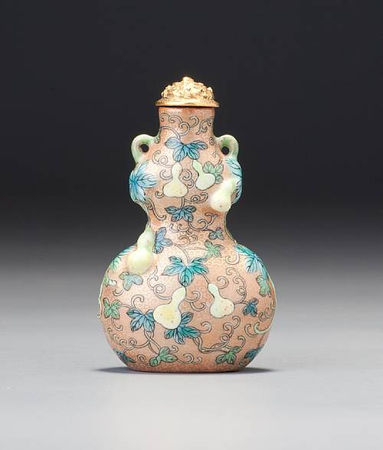
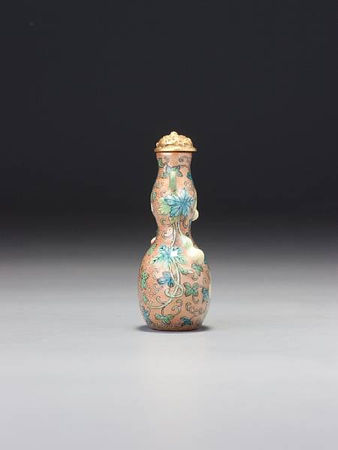
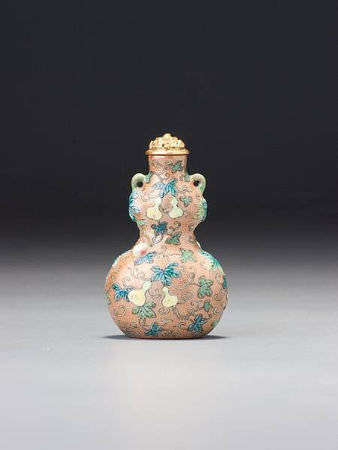



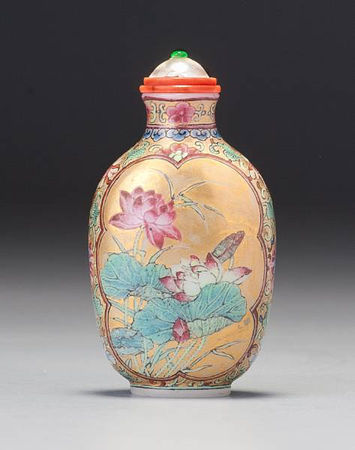
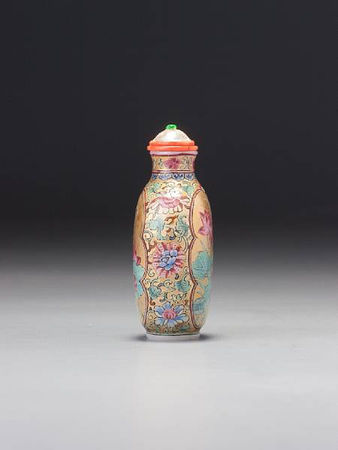
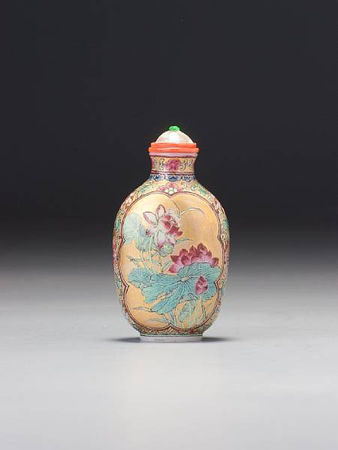
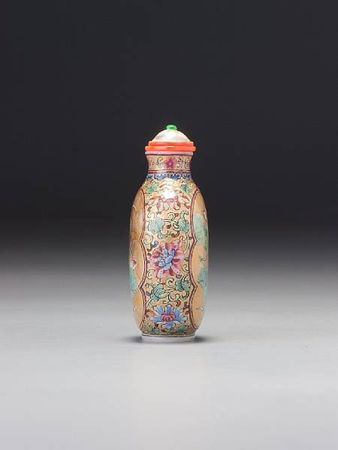

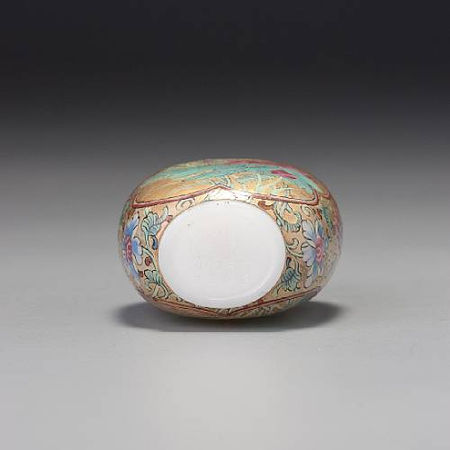



/http%3A%2F%2Fstorage.canalblog.com%2F59%2F39%2F119589%2F129631842_o.jpg)
/http%3A%2F%2Fstorage.canalblog.com%2F77%2F79%2F119589%2F129631259_o.jpg)
/http%3A%2F%2Fstorage.canalblog.com%2F64%2F85%2F119589%2F129631160_o.jpg)
/http%3A%2F%2Fstorage.canalblog.com%2F09%2F41%2F119589%2F129627152_o.jpg)